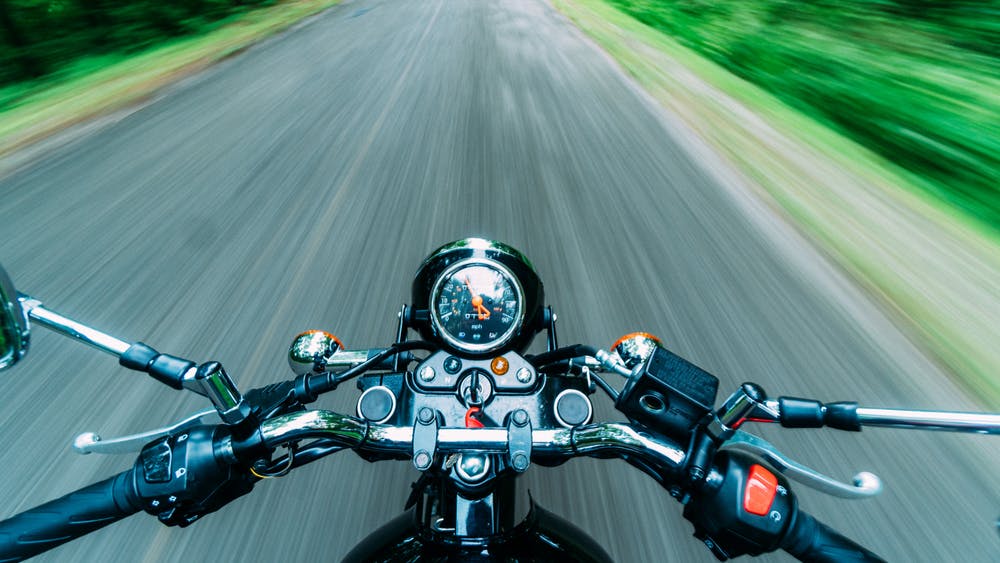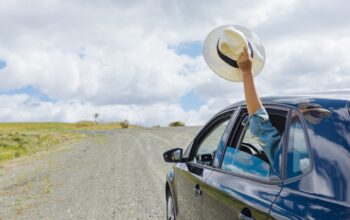One of the best things about car road trips is that you can roam in any direction you like and you can bring your bike with you. That way you can reach all the great places that can’t be reached by car and are too far for walking.
The only real concern about going on a road trip and bringing your bike with you is safety from bike thieves, as well as not damaging your bike while it’s on your car. Here we will explain how to protect your bike while traveling.
You will find here a set of “unwritten rules” on how to protect your bike at any time and under any circumstances. Everything you find here is based on our experience and is proven effective in practice.
Rule #1 – Invest in Quality Bike Rack
There is no replacement for quality racking such as a quality thule bike rack that can make the entire trip much easier and worry-free.If the bikes touch anything (another bike or the back of the car), that can seriously damage bike or car.
The damage can be counted in hundreds, if not more dollars. The best bike racks as listed in green4u are designed for that not to happen. In case touching is unavoidable, use rags, bubble wrap, or some other material between the bike and whatever touches the bike.
Rule #2 – No Bikes on the Roof
Yes, there are quality roof racks, but there are a few drawbacks you need to consider. Decreased gas mileage is one of the drawbacks. Let’s say you are driving long distances at 80+ mph, the gas mileage will be quite noticeable and will affect your travel budget.
Also, sometimes you may forget that you got bikes on your car rooftop and try to enter a garage or drive underneath a low overhang. Not only you can seriously damage the bikes, but you can damage the roof rack and even bend the roof of the car. Then you could be looking not in hundreds, but damages worth thousands of dollars.
Rule #3 – Whenever Staying at a Motel Book a Room at the Ground Floor
That way, you can park your car in front of your room door, and seamlessly put the bike in your room. When it comes to putting your bike in your room, the general rule here is to ask for forgiveness, not permission. That way you can rest assured that your bike won’t be stolen. Because of things like that it’s for the best to always keep your bike nice and clean.
Rule #4 – Always Lock Your Bike (Whenever and Wherever)
Most of the top quality bike racks come with their locking system. But even if the bike rack doesn’t include a lock, purchase one and use it at all times. That way, when you stop to take a break and refuel at a gas station or to grab a bite at some restaurant, you don’t have to worry about your bike being stolen.
Rule #5 – Monitor the weather carefully
After road vibrations, the weather is the next thing that can damage your bike. If possible, avoid traveling during rainy or snowy days. If not, then make sure that your bike is well protected from the weather. Very often big weather storms are announced before they happen. If there is one on the way, try to avoid it. If not possible, try to cover the bikes the best you can.
Often simple trash bags can do the job nicely. Simply cover the handlebars, the drivetrain, and other sensitive parts with trash bags, and use duct tape to shut them. That way, they can stay out of the weather’s reach.
The downside is that after a long drive, the wind can damage the trash bags, and you need to replace them with others. Tarps won’t be of much help as well as they will flap and rip apart.
If your bikes are not covered by anything, and rain or snow hits you while driving, make sure to clean your bike upon arrival. Just spray some water on it to get rid of the dirt and lube all the parts that need lubing and presto; the bike is back at its best.
Rule #6 – Bring Bike Spare Parts and Bike Repair Tools
If you are traveling over a longer period and your bike breaks down while in transit, then carrying repair tools and few spare parts can save the day. That’s especially important if you are going mountain biking or someplace with no bike shop nearby. Some of the bike stuff you should consider taking with you include spokes, seat-binder bolt, Brake and gear cables, tube and tire, chain tool, cleat screws, clipless pedals, and replaceable rear derailleur.
Besides, you might want to update your bike repair skills. After all, there is no point bringing all those stuff if you don’t know how to use them. In case you have your doubts about bike repair, bring a small repair manual so you can find your way around your bike.
Rule #7 – Be Wary of Cable Locks
The thing is, cable locks are easily chopped with simple wire cutters and don’t offer true protection from seasoned thieves. They can only protect your bike from opportunists and passing thieves.
Instead, you should find a quality lock that cannot be easily chopped by wire cutters. If possible use two or three locks – the more, the better. Also, you might want to lock the saddle, and the wheels as their hex bolts make them a super easy target for thieves.
Rule #8 – Get a GPS Tracking Device
Nowadays, GPS tracking devices are relatively cheap, and in case your bike gets stolen, the police can track it in no time. If you got an expensive bike, a GPS tracker would give you peace of mind.
Apply all that you have learned in this guide, and you can ensure the utmost bike protection.
Related Posts
Love traveling.











